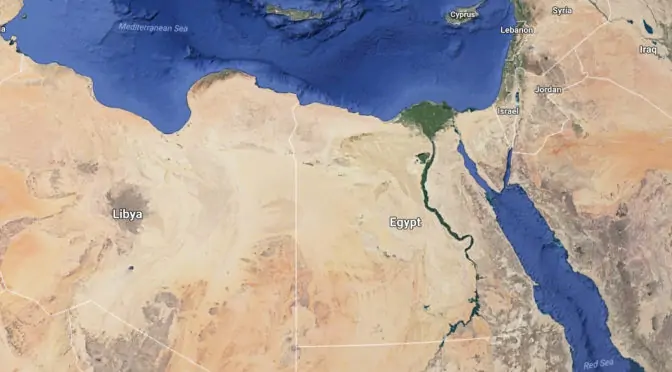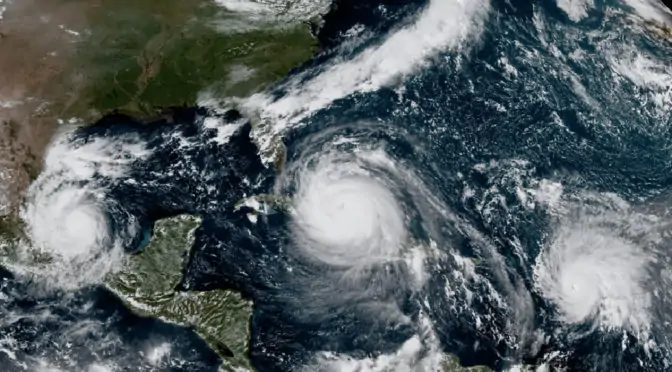Impact on Issues and Uncertainties
? How threatening will the leadership of China in terms of artificial intelligence (AI) be perceived? What would mean escalating tensions between China and the U.S. involving AI and how would they play out? (Critical uncertainties)
➚➚ Redrawing of the power map of the world along AI with related hardware capabilities (notably supercomputers) haves and have-nots
➘ U.S. ability to stem the declining tide in terms of AI and supercomputers
➚➚ China domination in supercomputing power
➚➚ China influence
➚➚ China rise to top major power status
➘➘ U.S. decline in supercomputing power
➘ U.S. influence
➚➚ US decline from sole superpower to major power status
➚ Escalating Tension U.S. – China
As we start our new section on Artificial Intelligence (AI), politics and geopolitics for the future, signals regarding the revolution at work pile up. China certainly appears to be leading the way in that matter.
First, China dominates again the new issue (13 Nov 2017) of the biannual list of the world’s fastest supercomputers. It not only takes “the top two seats, but [is] also pulling ahead of the United States in the sheer number of systems being used… China’s Sunway TaihuLight maintains the lead as the No. 1 system for the fourth time, with a performance of 93.01 petaflops.”
For previous and other signals check the
China leads now with 202 ranked supercomputer systems, while the U.S. only has 143 systems. Six months ago, the U.S. led with 169 supercomputers, China only having 160. The other countries rank far behind: “Japan in third place with 35, followed by Germany with 20, France with 18, and the UK with 15” (Top500).
This shows not only China’s ability to lead in supercomputers, but also to remain at the top, meanwhile also increasing the sheer mass of operational Chinese supercomputers. Meanwhile, the U.S. is not only falling behind in relative terms, but also in absolute ones.
This would tend to signal an American inability – which is not fateful but that seems to be settling in – of the U.S. to stem a decline in supercomputing and AI terms, which was one of the critical uncertainties we indicated previously.
Related
The Chinese Artificial Intelligence Revolution
Signal: Google Alphabet CEO Thinks China will Lead in AI by 2025
The Paradox of U.S. Decline … and the Tensions with North Korea
This hardware development is all the more important considering its linkage to AI, as the power of supercomputers is necessary for the development of AI, notably in its deep-learning component with its massive use of big data.
In the field of AI, Wang Yongdong, vice president of Microsoft’s Asia-Pacific R&D Group explained on 8 November at the AI World 2017 in Beijing that “three factors – massive data, cloud computing and strong algorithms – have led to the rise of AI technologies, particularly in China.”
Besides, as pointed out (see previous related Signal) by Google Alphabet CEO, China also benefits from strong planning and support given by the state to the development of AI. To this must also be notably added the efforts of the three “Internet giant companies: Baidu, Alibaba and Tencent”, as well as the sheer number of the Chinese population, when big data are a crucial element. These are huge assets for China in terms of AI.
The weaker points that could derail or slow China’s effort to dominate the AI world stage, according to Chen Qingqing (Global Times) are a weaker AI Chinese ecosystem (compared with the U.S.), as well as potentially lagging behind in “developing open-source software as well as general chips”. “Chinese scientists would be too eager to turn their research into profits”, as pointed out by Micree Zhan, CEO of Beijing-based custom chip manufacturer Bitmain.
We should note that, considering the platform where this AI article is published – i.e. Global Times, the international newspaper of the very official People’s Daily – denunciation of a too profit-minded spirit that could go against state policy is a strong signal given to the AI community to change their ways.
Should China overcome its weaknesses, it is well on its way to indeed dominate in both supercomputing power and AI, soon becoming the top major power of a world perceived through the lenses of AI haves and have-nots (see The Chinese Artificial Intelligence Revolution).
The potential consequences remain still highly and critical uncertainties. Among these – but far from being limited to it – the U.S. potential inability to accept the new technological world order (see The Paradox of U.S. Decline) increases the odds to see escalating tensions between the U.S. and China, despite the successful friendly bilateral summit of November 2017.
China dominates list of world’s top supercomputers again – Global Times
Once again, China dominated a new list of the world’s fastest supercomputers, not only taking the top two seats, but also pulling ahead of the United States in the sheer number of systems being used.
50th Anniversary | TOP500 Supercomputer Sites
The eighth TOP500 list was topped by a 2,048 processor CP-PAC built by Hitachi and installed at the Center for Computional Science at the University of Tsukuba in Japan. The system, which was a non-commercial extension of the Hitachi SR2201, achieved 368.20 gigaflops in running the Linpack benchmark.
2017 a key year for China’s AI industry as it begins to outperform the US in tech breakthroughs – Global Times
China and the US are now the two world leaders in pursuing AI development. 2017 in particular has been a key year for China’s AI industry, as more and more domestic companies have been making technological breakthroughs within the sector and as the application of AI has been penetrating all aspects of daily life in China.
AI World 2017世界人工智能大会
Executive President, President of Consumer Business Group of iFlytek



![Crowd in HK By Hamedog [GFDL (http://www.gnu.org/copyleft/fdl.html) or CC-BY-SA-3.0 (http://creativecommons.org/licenses/by-sa/3.0/)], via Wikimedia Commons Crowd in HK](https://redanalysis.org/wp-content/uploads/2017/11/320px-Crowd_in_HK-300x200.jpg)
![Baidu Campus2 By hwanghsuhui (photo of hwanghsuhui) [GFDL (http://www.gnu.org/copyleft/fdl.html) or CC BY-SA 4.0-3.0-2.5-2.0-1.0 (https://creativecommons.org/licenses/by-sa/4.0-3.0-2.5-2.0-1.0)], via Wikimedia Commons Baidu Campus2](https://redanalysis.org/wp-content/uploads/2017/11/Baidu_Campus2-300x225.jpg)
![Traffic in Huangpu District, Shanghai 2007-10-27 1 By BrokenSphere (Own work) [CC BY-SA 3.0 (https://creativecommons.org/licenses/by-sa/3.0) or GFDL (http://www.gnu.org/copyleft/fdl.html)], via Wikimedia Commons Traffic in Huangpu District, Shanghai 2007-10-27 1](https://redanalysis.org/wp-content/uploads/2017/11/320px-Traffic_in_Huangpu_District_Shanghai_2007-10-27_1-300x225.jpg)
![Alibaba group Headquarters By Thomas LOMBARD, designed by HASSELL (architects)[1] (Own work) [CC BY-SA 3.0 (https://creativecommons.org/licenses/by-sa/3.0)], via Wikimedia Commons Alibaba group Headquarters](https://redanalysis.org/wp-content/uploads/2017/11/320px-Alibaba_group_Headquarters-300x132.jpg)






